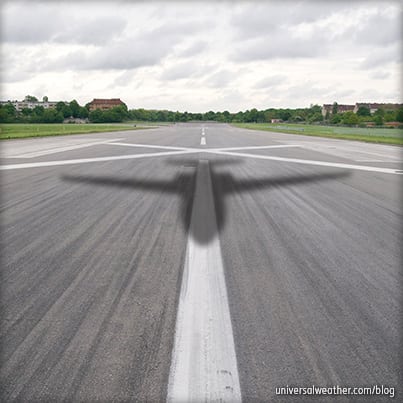Aircraft Noise Restrictions – What You Need to Know

Operators of Stage 2 aircraft are restricted, or forbidden, from operating to certain airports in many different regions. Restrictions may also apply if you’re operating a Stage 2 aircraft hush-kitted to Stage 3 standards. Best practice is to check on noise restrictions for each airport you plan to operate to in order to avoid issues or surprises. Stage 2 operators may have to consider alternate airports from their intended destination. When operating to certain regions – such as the European Union (EU) – Stage 2 operators may, in some cases, need to reconsider feasibility of a trip. Here’s an overview of what you need to know about aircraft/airport noise restrictions:
1. Know noise level limitations
Operators with noise ratings of Stage 3 or higher face the least operating restrictions worldwide. In most cases, aircraft that have been hush-kitted to Stage 3 levels enjoy the same operating benefits – but not always. Stage 2 operators are facing more and more restrictions around the world, and those operating limitations are expected only to increase in the future.
2. Noise restrictions vary significantly by region and country
The EU has strict noise regulations, and it’s becoming more and more difficult to manage Stage 2 operations in that region. Elsewhere, some countries – like Japan – do not permit Stage 2 operations, while others – like Australia – have curfews on Stage 2. On the other hand, countries like China or those in Central America, South America, Africa and the Middle East do not have Stage 2 restrictions at this time.
3. Individual airports have specific noise level restrictions
Curfew hours and operating limitations are increasingly impacting operations of Stage 2 aircraft at certain airports. Le Bourget (LFPB), for example, will not allow Stage 2 aircraft to arrive between 2330 and 0615 local, and you’ll need to be Stage 3-compliant to operate during those hours. Farnborough (EGLF) does not permit Stage 2 operations at all. Stansted (EGSS) has restrictions based on noise levels, and you’ll pay additional fees based on the noise level of your aircraft. At Dusseldorf (EDDL), Stage 3 aircraft may operate 0600-2300 local, while Stage 2 (aircraft up to 34 tons) operations are restricted to 0800-1900 local.
4. Be aware of noise restriction nuances
At Adelaide (YPAD), Stage 2 ops are banned, while Stage 3 aircraft may operate 0600-2300 local. You may, however, operate outside these hours – between 2301 and 0559 local – if your aircraft is on an "approved list." The problem is that this list is not always upgraded in a timely fashion. Gulfstream IVs, for example, are permitted to operate after hours, while Gulfstream Vs are not. If a Stage 4 aircraft, for example, is not on the "list," it will be barred from after-hour operations, while certain Stage 3 aircraft will be permitted to operate.
5. Noise waivers may not be obtainable
Waivers for airports with noise restrictions are difficult to obtain unless you have very special circumstances. Military and diplomatic flights that go through diplomatic channels, as well as some air ambulance flights, are usually able to obtain noise waivers. If you’re bringing a Stage 2 aircraft in for maintenance purposes, a noise waiver may be granted. If you need a noise waiver, it’s best to work with your 3rd-party provider so that they can coordinate the request with the appropriate airport authorities.
6. Overflight and landing permits may be tied to noise certificates
Some locations – such as Hong Kong (VHHH) – require that noise certificates be provided when requesting a permit. Spain requires a noise certificate for all charter landing permits. In other regions – including Turkey – a noise certificate is required to obtain either landing or overflight permission. Certain airports and regions have become more stringent over recent years on requirements that noise certificates be provided.
7. Know documentation requirements to verify noise level
It’s best to have a noise certificate stating the manufacturer, make, model, serial number and decibel levels for takeoff and approach. Some noise certificates also list tail number of the aircraft. Presenting noise data from your aircraft manual – without tying noise levels to a particular serial number – may not satisfy Civil Aviation Authorities (CAA). In most cases, they want to see a noise certificate. If correct documentation is not submitted to CAA, your landing or overflight permit process may be halted.
8. There are penalties for aircraft that do not meet noise standards
While there are Stage 3-only airports where some Stage 2 operations are routinely flying into, it’s not recommended to take such risks. Operators not in compliance with noise regulations, or curfews, may be given warnings – at a minimum – and may be subject to heavy fines. Best practice is always to have your noise certificate onboard – particularly if you’re hush-kitted from Stage 2 to Stage 3 – in case of ramp check.
9. Provide your ground handler with noise documentation
When dealing with airport noise curfews/restrictions, it’s good practice to provide your ground handler with noise documentation tied to your serial number – particularly if you’re operating a Stage 2 aircraft hush-kitted to Stage 3. Should you wish to change departure time – or request an extension to airport operating hours – your ground handler will be able to verify quickly your noise compliance with local authorities.
Conclusion
Stay updated on noise regulation changes, as they may limit or prohibit operational flexibility in certain regions. Restrictions on Stage 2 operations continue to tighten, and flight planning for Stage 2 aircraft is becoming more and more challenging in regions such as the EU and Australia. To avoid operational delays at destination, and to prove compliance during random ramp checks, always carry a noise certificate onboard.
Questions?
If you have any questions about this article, contact me at larrywilliams@univ-wea.com.



